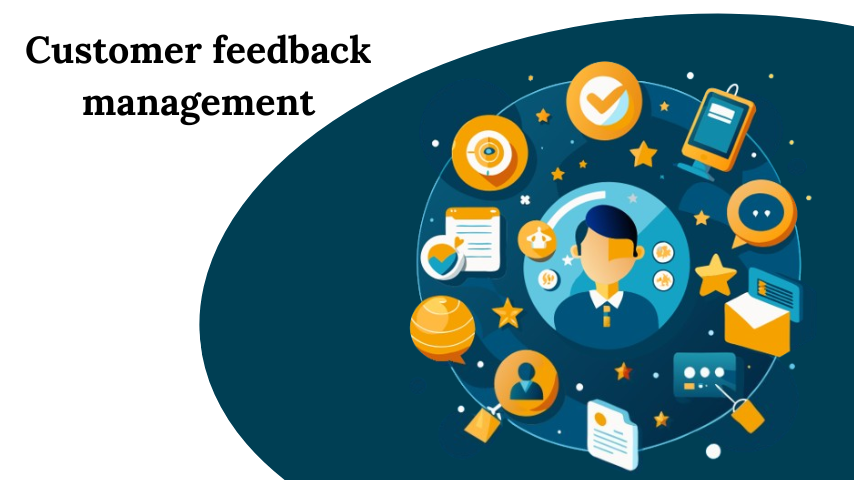What Are the Three Types of Complaints? A Comprehensive Guide

In today’s customer-centric business environment, understanding the nature of complaints is crucial for organizational growth and customer retention. Complaints, when properly managed through effective customer feedback management (CFM), can transform into valuable opportunities for improvement. This article explores the three fundamental types of complaints businesses encounter and provides insights on how to address each effectively.
Understanding the Importance of Complaints
Before diving into the types of complaints, it’s worth acknowledging that complaints are not necessarily negative. They represent direct customer feedback that, when properly managed, can:
- Highlight areas requiring immediate attention
- Reveal systemic issues within your organization
- Provide opportunities to strengthen customer relationships
- Offer competitive intelligence about market expectations
- Serve as early warning signals for potential larger problems
Businesses implementing robust customer feedback management (CFM) systems view complaints as valuable data points rather than inconveniences.
The Three Main Types of Complaints
1. Service-Related Complaints
Service-related complaints focus on how customers are treated during their interactions with your business. These complaints typically stem from the human element of customer service.
Common Service-Related Complaints:
- Rude or unprofessional staff behavior
- Excessive wait times for assistance
- Lack of knowledge or training among employees
- Poor communication or follow-up
- Inconsistent service quality across different channels or locations
How to Address Service Complaints:
Service complaints require prompt attention as they directly impact customer perception. Implementing a structured customer feedback management (CFM) approach for these complaints involves:
- Acknowledging the complaint promptly
- Offering a sincere apology for the experience
- Explaining what happened (if appropriate)
- Providing a solution or compensation
- Ensuring the issue won’t recur through staff training or process improvements
Service complaints often present the greatest opportunity for turning dissatisfied customers into loyal advocates when handled correctly.
2. Product-Related Complaints
Product complaints address issues with the actual goods or services purchased. These concerns directly relate to whether the product meets customer expectations and delivers on promised benefits.
Common Product-Related Complaints:
- Product defects or malfunctions
- Products not meeting advertised specifications
- Missing components or features
- Difficulty using the product as intended
- Short product lifespan or durability issues
- Software bugs or technical glitches
How to Address Product Complaints:
Product complaints require technical assessment alongside empathetic customer service. An effective customer feedback management (CFM) system for product complaints should include:
- Thorough documentation of the specific issue
- Technical evaluation of the reported problem
- Clear explanation of findings to the customer
- Appropriate remedies (repair, replacement, refund, or compensation)
- Root cause analysis to prevent similar issues
Product complaints often provide valuable R&D insights that can drive product improvements and innovation.
3. Process-Related Complaints
Process complaints involve operational aspects of the business that affect customer experience. These complaints highlight inefficiencies or complications in how customers interact with your organization.
Common Process-Related Complaints:
- Complicated purchasing procedures
- Confusing return or exchange policies
- Billing errors or unclear charging practices
- Excessive paperwork or redundant steps
- Inconsistent application of company policies
- Poor coordination between departments
How to Address Process Complaints:
Process complaints often indicate systemic issues requiring organizational changes. A comprehensive customer feedback management (CFM) approach should:
- Map the customer journey to identify friction points
- Analyze complaint patterns to detect recurring issues
- Involve cross-functional teams in developing solutions
- Implement process improvements and simplifications
- Monitor effectiveness through ongoing feedback collection
Process complaints frequently provide the greatest return on investment when addressed, as improvements can positively impact numerous customer interactions.
The Hidden Fourth Type: Circumstantial Complaints
While not traditionally categorized separately, circumstantial complaints deserve mention. These complaints arise from factors largely outside a company’s direct control but still affect customer experience.
Examples include:
- Weather disruptions affecting service delivery
- Supply chain issues caused by global events
- Regulatory changes impacting product availability
- Industry-wide technological limitations
Addressing circumstantial complaints requires transparent communication and reasonable accommodation when possible.
Implementing Effective Customer Feedback Management (CFM)
Regardless of complaint type, a robust customer feedback management (CFM) system is essential for capturing, categorizing, and resolving complaints effectively. A comprehensive CFM approach should:
1. Create Multiple Feedback Channels
Ensure customers can easily submit complaints through:
- Online forms and email
- Social media platforms
- Phone support
- In-person interactions
- Mobile applications
2. Establish Clear Complaint Processing Protocols
Develop standardized procedures for:
- Complaint acknowledgment timeframes
- Categorization and priority assignment
- Escalation pathways for complex issues
- Resolution timelines for different complaint types
- Follow-up communications
3. Train Staff Appropriately
Equip your team with:
- Active listening skills
- Empathetic response techniques
- Technical knowledge for their specific roles
- Authority to resolve issues at appropriate levels
- Understanding of when to escalate complaints
4. Analyze Complaint Data
Extract meaningful insights by:
- Tracking complaint volumes by category and subcategory
- Identifying recurring themes and root causes
- Measuring resolution time and customer satisfaction
- Correlating complaints with customer demographics
- Benchmarking against industry standards
5. Close the Feedback Loop
Complete the customer feedback management (CFM) cycle by:
- Implementing systemic improvements based on complaint trends
- Communicating changes to affected customers
- Recognizing staff who effectively resolve complaints
- Regularly reviewing and updating complaint handling processes
- Sharing success stories throughout the organization
What’s the most common type of complaint across industries?
Service-related complaints typically represent the largest category across most industries. This reflects the fundamental importance of human interaction in customer experience, regardless of product or service type.
How quickly should businesses respond to different types of complaints?
While all complaints deserve acknowledgment within 24 hours, resolution timeframes may vary:
- Service complaints: 1-2 business days
- Process complaints: 2-5 business days
- Product complaints: Varies based on technical complexity (typically 2-10 business days)
Can social media complaints be handled differently than direct complaints?
While the response channel differs, the fundamental approach should remain consistent. Social media complaints require the same careful attention but with additional consideration for public visibility and potential viral spread.
How does customer feedback management (CFM) software help with complaint resolution?
CFM software centralizes complaint data, automates routing and escalation, tracks resolution progress, identifies patterns, measures satisfaction with resolutions, and generates actionable reports for management.
Should different departments handle different types of complaints?
While specialized teams may have greater expertise with specific complaint types, a unified customer feedback management (CFM) approach ensures consistent customer experience. Cross-functional collaboration often produces the most effective resolutions.
Conclusion: Transforming Complaints into Opportunities
Understanding the three main types of complaints—service, product, and process—provides the foundation for effective customer feedback management (CFM). By properly categorizing complaints, businesses can develop targeted strategies for resolution and improvement.
Remember that complaints represent customers who care enough to speak up rather than silently switch to competitors. Each complaint type offers unique insights:
- Service complaints reveal training and culture opportunities
- Product complaints drive innovation and quality improvements
- Process complaints highlight operational efficiencies
Organizations that embrace complaints as valuable feedback and implement comprehensive customer feedback management (CFM) systems will ultimately deliver superior customer experiences. In today’s competitive marketplace, the ability to transform complaints into opportunities for improvement may be the defining factor between merely surviving and truly thriving.
The most successful businesses don’t just resolve individual complaints—they systematically analyze complaint patterns to drive organizational transformation. By understanding and appropriately addressing the three types of complaints, your organization can build stronger customer relationships and gain significant competitive advantage.

